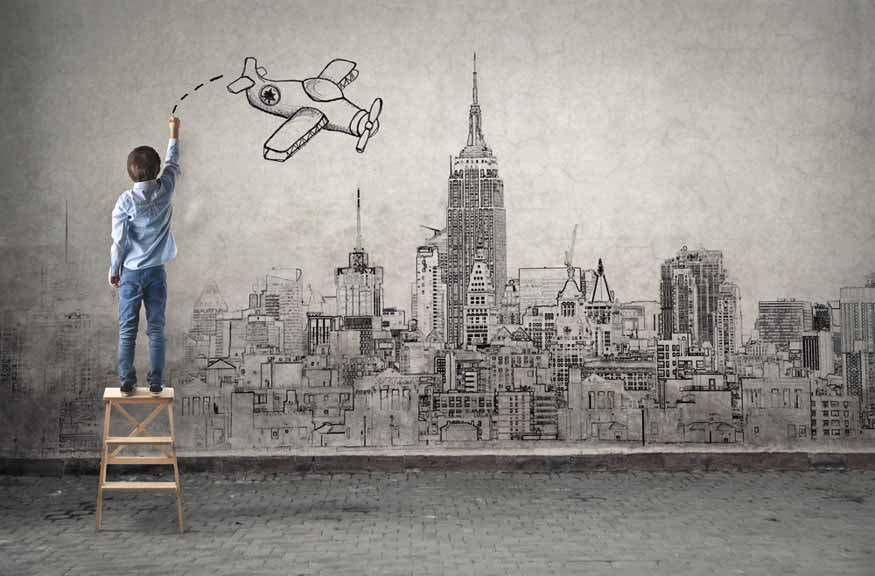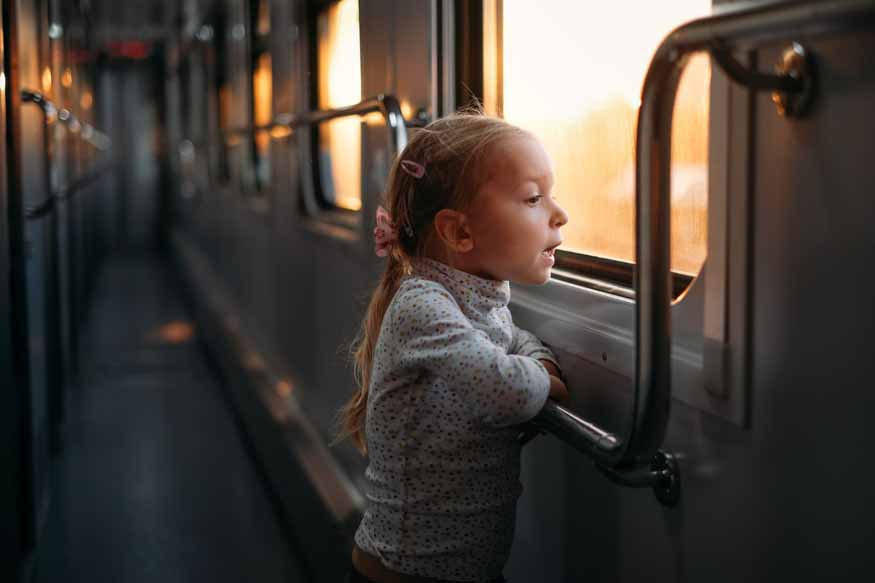Exploring Different Modes Of Transportation With Kids

As parents, guardians, or educators, taking kids on an exploratory journey of the world around them can be exciting and highly educational. One fascinating area to explore is transportation.
Buses, boats, and trains! Which is your favourite mode of transportation? Numerous types of transportation enable us to go from one part of the world to another, and learning about them is one of the first things that young children do when they begin talking with their families.
During early childhood, children rely on their parents to carry them around. Once they start walking, they hop into their little strollers and roam the city with Mom and Dad guiding them. As they start growing older, they begin to play with toy automobiles and learn how to drive through their homes, which proves to be an excellent workout for their spatial awareness. Slowly and steadily bicycles become the preferred mode of transportation for many children who want to embark on adventures with family and friends!
This article will take you on a deep dive into the different modes of transportation for kids.
Mode of Transportation for Kids

Water Transport to Kids
Water transport, one of the oldest modes of transportation for kids, continues to play a vital role in today’s world. The types of water transport vary widely, offering an abundance of teaching opportunities for children.
- Ships and Boats
- Ferries
- Submarines
- Yachts
- Catamarans
- Hovercraft
- Gondolas and Canals Boats
- Icebreakers
- Barges
Ships are primarily used for long-distance travel and transporting large quantities of goods. Container ships, for example, are central to global commerce. Boats, smaller than ships, are versatile and widespread. They can be found on rivers, lakes, and seas for purposes like fishing, leisure, or local transport.
Ferries, used to transport people, cars, and goods across rivers and short sea distances, demonstrate how water transport can help overcome geographical barriers. They can be an exciting and fun experience for children, making them a favourite among educational trips.
Watercraft are capable of underwater operation. They can be military vessels or, in some cases, luxury or research vessels.
Private boats or ships can range from simple to highly luxurious. They can be motor-driven or sail-driven.
A type of multi-hulled watercraft, catamarans have two parallel hulls of equal size. They can be sail or engine-powered and are known for their stability and speed.
A vehicle that travels over water and lands on a cushion of air, propelled by large fans.
Gondolas are flat-bottomed rowboats, iconic in the waterways of Venice. Canal boats, often found in places like Amsterdam or the UK, can be leisure crafts or serve as floating homes.
Powerful ships designed to move and navigate through ice-covered waters, breaking the ice and creating a path for other vessels.
Flat-bottomed ships are often used for carrying heavy cargo on canals, rivers, and other inland waterways.
Types of Air Transport
Exploring the types of air transport with children can spark their imagination as they learn about the marvel of flight.
- Aeroplanes (or Airplanes)
- Propeller Planes
- Helicopters
- Hot Air Balloons
- Blimps and Airships
The most common type of air transport that probably springs to mind is the aeroplane. Aeroplanes come in different shapes and sizes, designed for various tasks and distances. Engaging children in aeroplane games and activities can further enhance their understanding and excitement about aeroplanes.
Commercial Airliners: These are the large aircraft you might fly on for holidays or business trips. Examples include the Boeing 747, Airbus A320, and the modern-day Dreamliner.
Typically smaller than jet airliners, these aeroplanes are powered by propellers. They are often used for shorter flights, training, or even recreational purposes.
Unlike aeroplanes, helicopters can take off and land vertically, which means they don’t need a runway. This feature makes them perfect for rescues, medical emergencies, or transporting people and goods to places hard to reach by other means.
One of the oldest forms of air transport, hot air balloons offer a serene and picturesque way to travel. They rely on the simple principle that hot air rises. By heating the air inside the balloon, it lifts off the ground, carrying its passengers with it.
Sometimes confused with hot air balloons, blimps and airships have a more defined shape, often resembling a giant cigar. These vessels stay aloft thanks to gases like helium. They were historically used for reconnaissance, but today, they are mostly seen advertising or offering sightseeing tours.
Types of Rail Transport
Rail transport has been a linchpin in the development of modern societies, making it an important area to explore with children.
- Passenger Trains
- Freight Trains
- Light Rail and Trams
- Metro or Subway Systems
- Monorails
- Maglev Trains
- Narrow Gauge Trains
These are the most common trains designed to transport people from one place to another. The various kinds of trains are Intercity and High-speed Trains, Commuter Trains, Regional and Local Trains and Tourist or Heritage Trains. And it is a common transportation for kids too
These are specially designed to transport goods. Depending on the cargo, there are various types of freight cars like tankers, container cars, and refrigerated cars.
Operating within cities, light rail is a mode of urban transit that often runs both on city streets and dedicated lines. Trams are a form of light rail that mostly run on street-level tracks.
Built to transport passengers within big cities, metro or subway systems are high-capacity trains running on dedicated underground or elevated tracks, separate from road traffic.
A type of elevated rail system where trains run on a single rail, often seen in places like airports or amusement parks.
Short for ‘Magnetic Levitation’, these trains float above the tracks using strong magnets, reducing friction and allowing very high speeds. The Shanghai Maglev Train is a prime example.
These trains run on tracks that are narrower than the standard width. They are often found in mountainous regions, like the Darjeeling Himalayan Railway in India.
Types of Road Transport
Road transport is the most familiar to children and offers plenty of educational opportunities.
- Cars
- Bicycles
- Taxis and Autos
- Motorcycles and Scooters
- Vans and Minivans
- Lorries and Trucks
- Trailers and Caravans
Cars are the most common mode of road transport. By exploring the different types of cars – from electric vehicles to SUVs – children can learn about energy sources, environmental impacts, and the concept of personal transportation. Cars are also a common transportation for kids too.
Bicycles provide a simple, eco-friendly mode of transport. They can teach children about the importance of exercise, sustainability, and the mechanics of motion.
Cars that provide services to ferry passengers from one point to another for a fee. Ride-shares are services like Uber or Lyft where private car owners offer rides for a price. There are also local services like Taxi and Three-wheeled vehicles Autos and Tuk Tuks.
Two-wheelers that are powered by engines offer more speed than bicycles. They’re popular for their manoeuvrability, especially in traffic-congested areas.
Smaller than buses but larger than typical cars, they’re used for carrying goods or passengers. Minivans, often referred to as MPVs (Multi-Purpose Vehicles), are especially popular among families.
Vehicles designed for transporting goods. They vary in size and capacity. Some of the trucks are Pick-up Trucks, Tanker Trucks, Refrigerated Trucks, Articulated Lorries
Trailers are unpowered vehicles typically pulled by powered ones. Caravans, or camper trailers, are designed for people to live in during holidays or trips.
So discussing the various modes of mobility comes fairly naturally to the children. However, learning the names of vehicles is not the only significant aspect of this topic; it is also necessary to learn how to represent the action of using various transportation systems
On that note, to enhance the early learning skills of your child, consider EuroKids. We focus on the holistic development of the child and provide a nurturing environment.
For informative and accurate articles on all things related to your new born-toddler’s development, growth, health and nutrition, follow EuroKids Blogs and do check out our nationally recognized preschools – EuroKids for the first step in your kid’s educational journey!
About Us
EuroKids is recognized as India’s most respected early childhood education brand, with over 21 years of experience, and has a presence in 350+ cities & 3 countries. The journey began in 2001 with 2 preschools and since then the group has consistently raised the bar for preschool education through its innovative and mindful curriculum – EUNOIA, which helps children grow holistically in a home-like environment.
